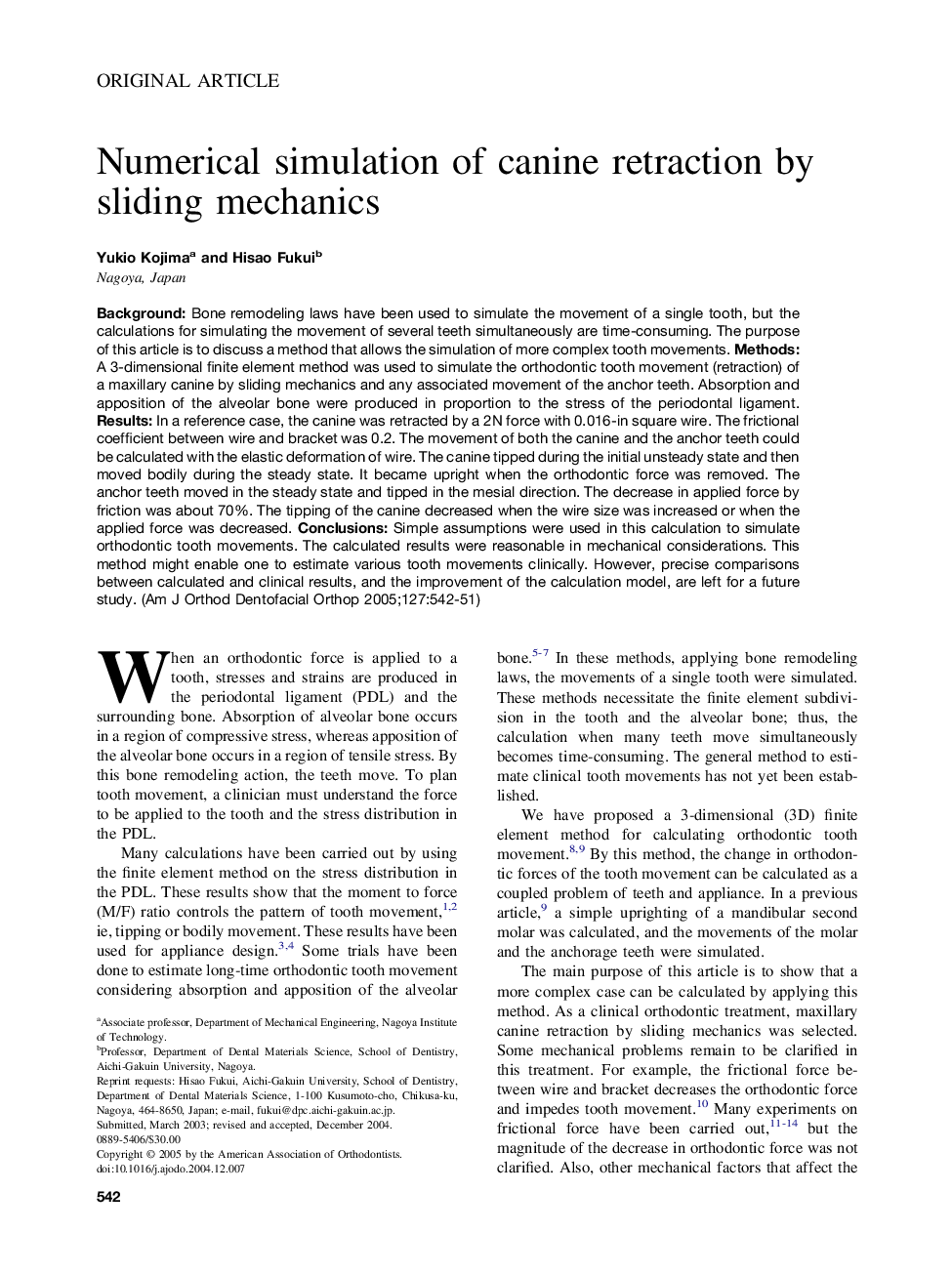| Article ID | Journal | Published Year | Pages | File Type |
|---|---|---|---|---|
| 9992916 | American Journal of Orthodontics and Dentofacial Orthopedics | 2005 | 10 Pages |
Abstract
Background: Bone remodeling laws have been used to simulate the movement of a single tooth, but the calculations for simulating the movement of several teeth simultaneously are time-consuming. The purpose of this article is to discuss a method that allows the simulation of more complex tooth movements. Methods: A 3-dimensional finite element method was used to simulate the orthodontic tooth movement (retraction) of a maxillary canine by sliding mechanics and any associated movement of the anchor teeth. Absorption and apposition of the alveolar bone were produced in proportion to the stress of the periodontal ligament. Results: In a reference case, the canine was retracted by a 2N force with 0.016-in square wire. The frictional coefficient between wire and bracket was 0.2. The movement of both the canine and the anchor teeth could be calculated with the elastic deformation of wire. The canine tipped during the initial unsteady state and then moved bodily during the steady state. It became upright when the orthodontic force was removed. The anchor teeth moved in the steady state and tipped in the mesial direction. The decrease in applied force by friction was about 70%. The tipping of the canine decreased when the wire size was increased or when the applied force was decreased. Conclusions: Simple assumptions were used in this calculation to simulate orthodontic tooth movements. The calculated results were reasonable in mechanical considerations. This method might enable one to estimate various tooth movements clinically. However, precise comparisons between calculated and clinical results, and the improvement of the calculation model, are left for a future study.
Related Topics
Health Sciences
Medicine and Dentistry
Dentistry, Oral Surgery and Medicine
Authors
Yukio Kojima, Hisao Fukui,
